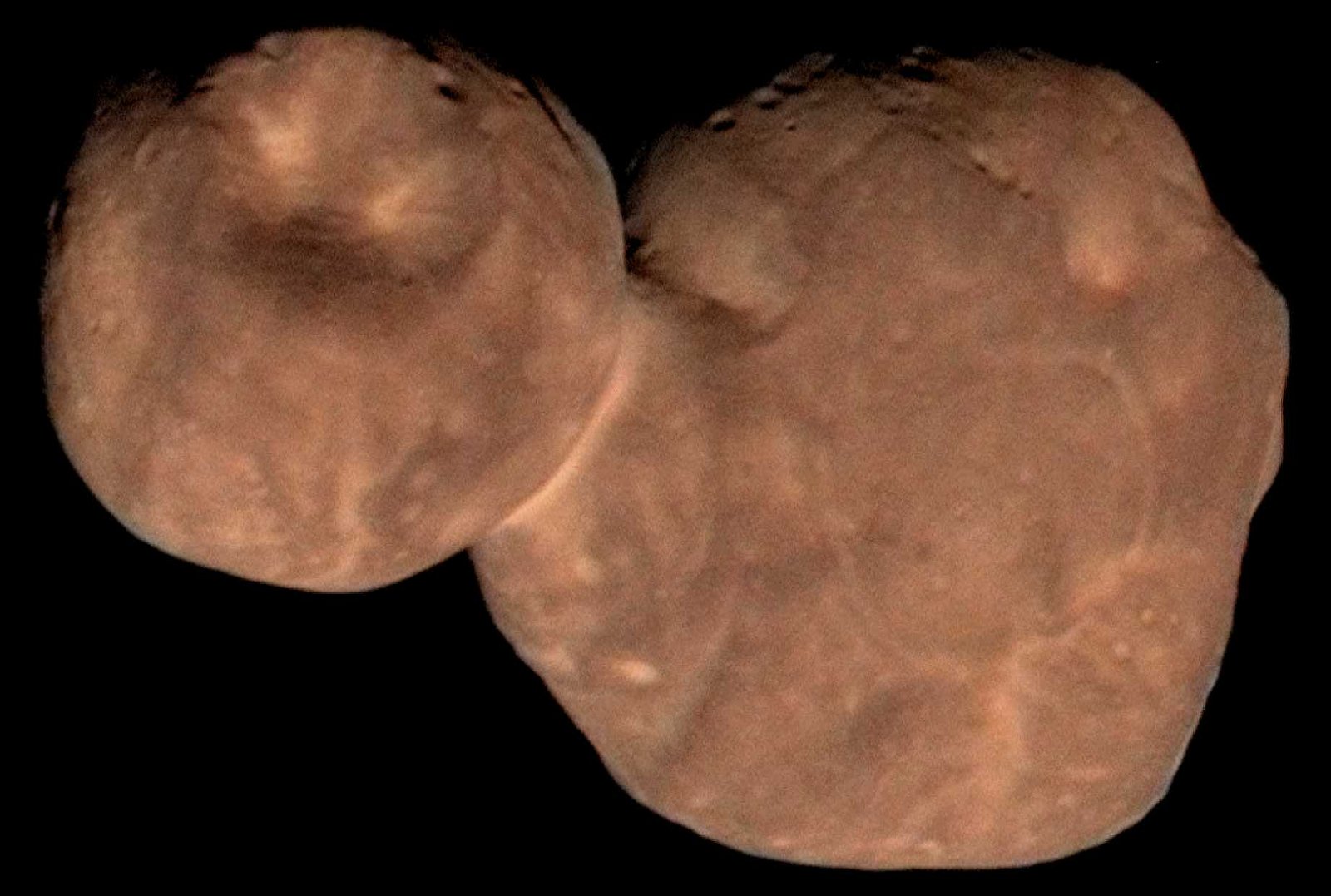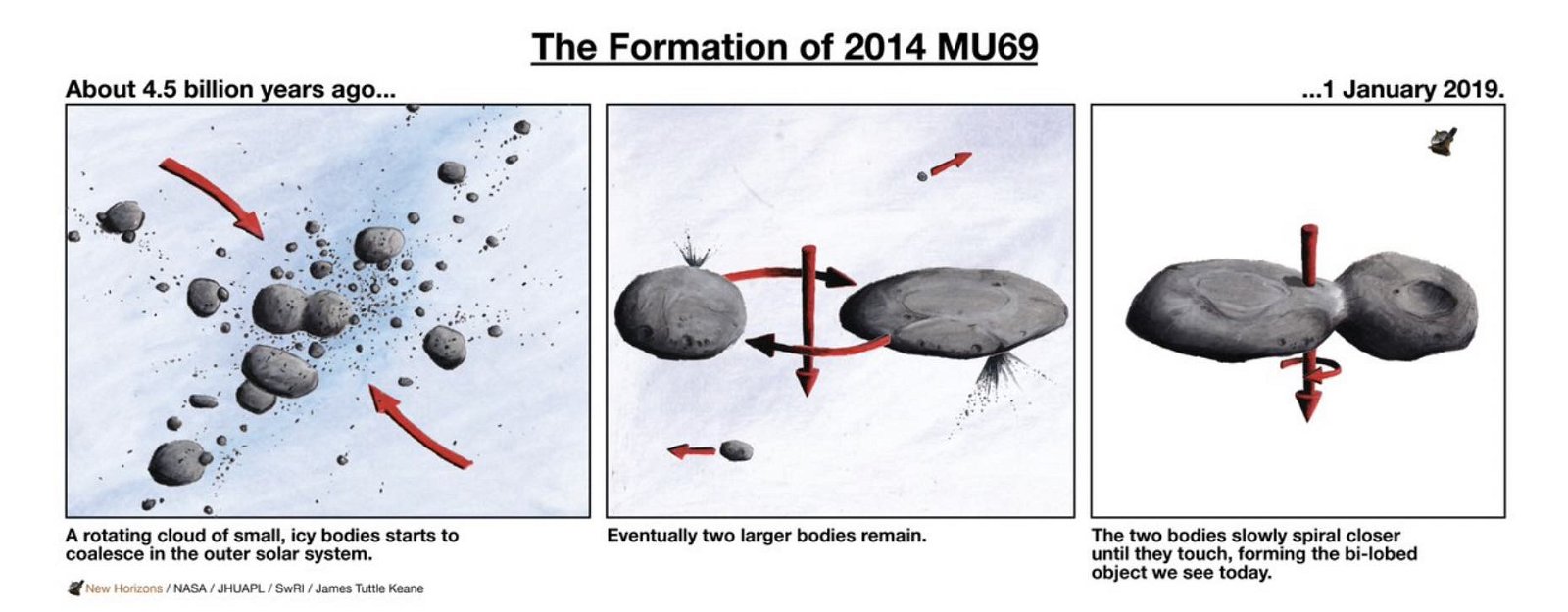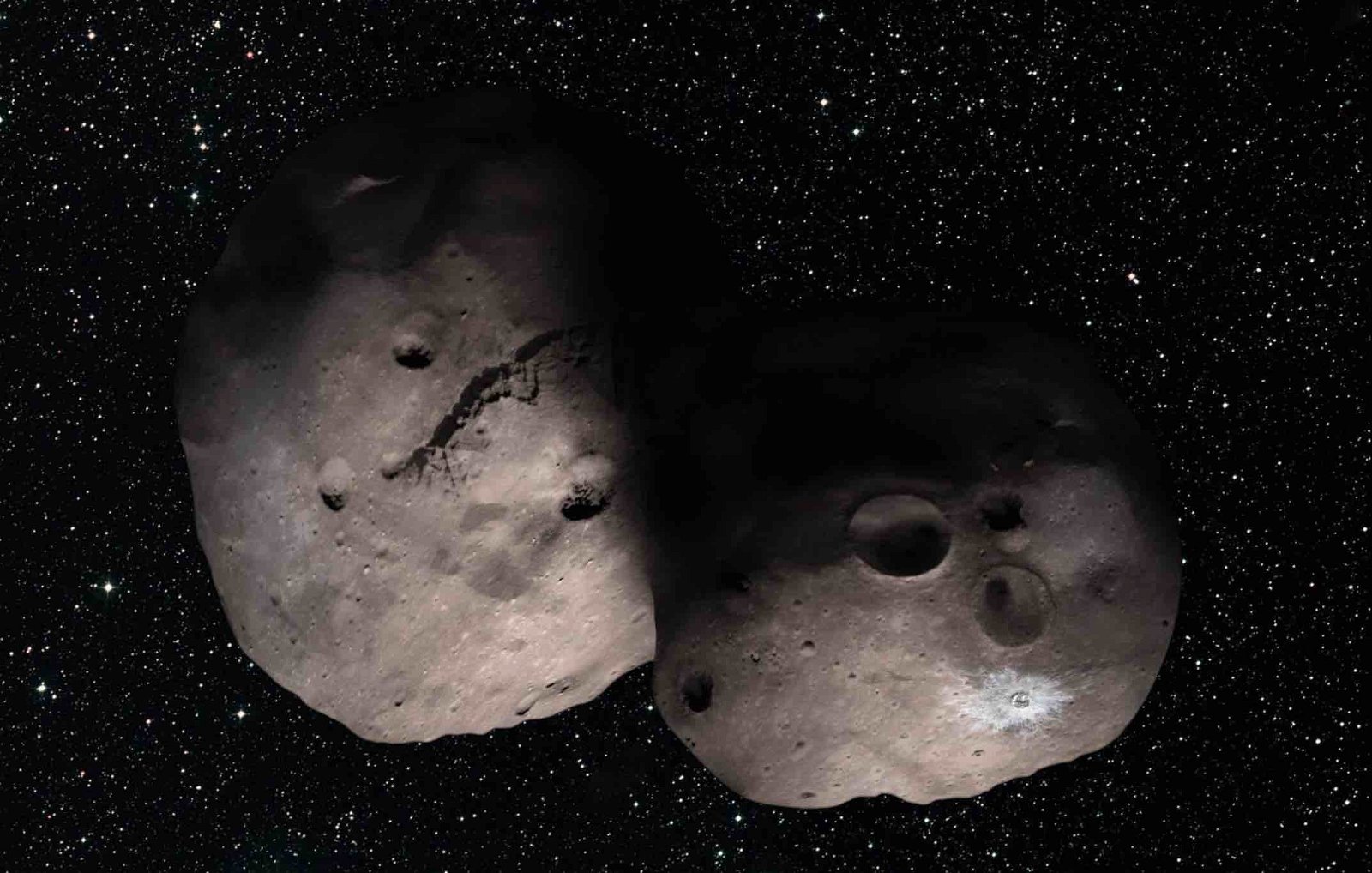On January 1, 2019, NASA’s New Horizons space probe made its flyby of the most primitive and oddly shaped object ever visited by a spacecraft from Earth. The trans-Neptunian object, 486958 Arrokoth, is what astronomers call a cold classical Kuiper belt object, and among its many mysteries are its curious, hourglass shape, as well as the unusual mound structures that cover its surface.
Formally named after a word borrowed from the indigenous Powhatan language of Virginia’s Tidewater region, the object’s unusual properties and great distance from Earth also helped inspire one of its nicknames: Ultima Thule, a term used by early Roman and Greek cartographers for the northernmost point reachable, or the furthest distances beyond the world’s known borders. The nickname is a fitting one, since the 2019 flyby also marked the farthest object visited by spacecraft from Earth.
Arrokoth’s odd appearance arises from the pair of conjoined minute planets, or planetesimals, from which it is formed. It was discovered in June 2014 during a search for potential targets for New Horizons and has remained mysterious even since the spacecraft obtained imagery of the object that revealed the unusual 5-kilometer-long mound structures that today are known to cover Wenu, the object’s larger lobe.


Now, a new study led by researchers at Southwest Research Institute (SwRI) has found that Arrokoth’s curious mounds are similar enough to point to them likely having a common origin, findings that are detailed in a new research study.
Led by Dr. Alan Stern, the Principal Investigator of the New Horizons mission and Associate Vice President of SwRI, these unusual features, which they characterize as potential “building blocks” pointing to Arrokoth’s origins, may be able to help scientists better understand the processes that allow planetesimals to form.
Based on the data collected by New Horizons during its flyby in 2019, Stern and the team were able to identify a dozen mounds on Wenu that appear to be the same size and shape, and even possess the same general coloration and reflectivity, or albedo.
In addition to the twelve mounds located on Wenu, three more of the unusual structures were also found on Weeyo, Arrokoth’s smaller lobe.
Lowell Observatory scientist Dr. Will Grundy, also a co-investigator of the New Horizons mission, likened the mounds covering Wenu to the appearance of a raspberry, with the berry’s surface composed of a collection of smaller subunits.
“It’s amazing to see this object so well preserved that its shape directly reveals these details of its assembly from a set of building blocks all very similar to one another,” Grundy said in a recent statement.
One thing the SwRI team’s findings seem to indicate is that Arrokoth’s geology is a good match for a model of planetesimal formation known as streaming instability, where drag results from particles orbiting in a gas disk that, over time, concentrates them into clumps that eventually accumulate enough gravity that they can collapse.


The initial clumps, though small, can increase the orbital velocity of the gas, causing faster-drifting particles to join them and ultimately leading to their growth over time. Stern says that the similarities of the sizes of Arrokoth’s mounds may help reveal the ways these structures were formed and could ultimately lead to new insights into planetesimal formation.
“If the mounds are indeed representative of the building blocks of ancient planetesimals like Arrokoth, then planetesimal formation models will need to explain the preferred size for these building blocks,” Stern said in a statement.
The recent insights Stern and the team have made with Arrokoth could also prove to be useful in future missions. This November, NASA’s Lucy space probe will arrive to make the first flyby visit of Jupiter’s Trojan asteroids, and among its potential targets could be similar planetesimals. The ESA’s Comet Vision Program is also conducting a comet interceptor mission which may be ideal for similar future observations.
Stern says searching for mound-like structures on those space objects will be important because it will help scientists like him compare the recent observations made of Arrokoth with other planetesimals and reveal whether similar formation processes are likely to have taken place there.
Stern recently presented the team’s findings in San Antonio at the American Astronomical Society’s 55th Annual Division for Planetary Sciences (DPS) meeting, following the publication of a paper, “The Properties and Origin of Kuiper Belt Object Arrokoth’s Large Mounds” in the Planetary Science Journal.
Micah Hanks is the Editor-in-Chief and Co-Founder of The Debrief. He can be reached by email at micah@thedebrief.org. Follow his work at micahhanks.com and on Twitter: @MicahHanks.

